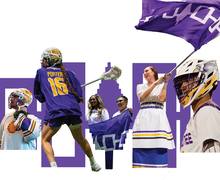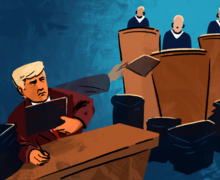Explained: The NCAA’s targeting rule and how Syracuse fits into it
Corey Henry | Staff Photographer
Two SU players were ejected against Holy Cross on Saturday.
Twice during Syracuse’s game against Holy Cross, Orange defensive linemen charged into Crusaders’ quarterbacks, struck their upper bodies and planted them into the ground. Both plays resulted in ejections — the most serious penalty for unnecessary roughness — due to the NCAA’s targeting rule.
Boos poured onto the field as defensive linemen Tyrell Richards and Drew Tuazama were dismissed from the game. Postgame, both coaches didn’t reaffirm their confidence in the calls postgame.
“I’ve seen hits like that on Thanksgiving Day in the backyard on brothers versus brothers,” Syracuse head coach Dino Babers said after the 41-3 SU win, “and nobody had to go tell mom and dad that they got hit that hard.”
The rules SU’s defenders broke are known as “9-1-3” and “9-1-4” in the NCAA rulebook. 9-1-3 prohibits targeting or making forcible contact with the crown of the helmet, while 9-1-4 prohibits targeting or forcible contact to the head or neck area of a defenseless player. Whether the hits should be legal is a separate debate. These are the rules, and former Big East (now known as the American Athletic Conference) coordinator of football officiating, Terry McAulay said they were applied properly on Saturday.
“Had those plays not been called targeting by either on-field [officials] or replay they would’ve really been remiss in their duties,” said McAulay, who now serves as a football rules analyst for NBC Sports.
McAulay added that Syracuse’s hits met the “exact criteria” of targeting.
Referees have a four-part checklist for targeting penalties. The first check is a clear attempt at attacking the opponent, not playing the ball. The second includes launching one’s body at another player or leading with the helmet, shoulder or forearm.
Then the targeting call splits into 9-1-3 and 9-1-4, depending on if the player ducks the crown of their helmet. Rule 9-1-3 — which could penalize any player who uses the crown of their helmet regardless of where it hits the opponent — is meant to protect the player leading with his head from injury, McAulay said. 9-1-4 is focused on protecting defenseless players.
Tuazama’s hit on Holy Cross quarterback Emmett Clifford breached both rules, McAulay said.
“He goes high,” McAulay said. “I see somewhat of a launch and he clearly leads with the head into the opponent.”
Clifford is also classified as defenseless in this position. For a quarterback to be defenseless, they don’t need to be in a throwing motion or even about to start a throwing motion. A quarterback is deemed a defenseless player when in a passing posture, meaning he’s back to pass searching for receivers and hasn’t established himself as a runner.
Tuazama also checks the boxes for “forcible contact” and initiating that contact with his helmet, McAulay said. There is no clear definition of forcible contact in the rulebook. McAulay describes it as not a glancing hit but one that increases the risk for injury.
In Richards’ hit, McAulay saw a clear crowning of the defensive linemen’s helmet into the Holy Cross quarterback’s shoulder.
— OttosGrove.com ? (@OttosGrove) September 28, 2019
Since the rule is in place to protect the player dipping their helmet, it doesn’t matter that Richards’ initial contact may not have been with the quarterback’s head. The moment he initiates contact with the crown of his helmet, the hit could qualify as targeting.
“He puts his head down and he clearly makes forcible contact to a player, to an opponent and that is absolutely, unequivocally a targeting foul,” McAulay said.
Saturday’s plays also stick out because of how clear the players’ paths were to the ball. Had the players been blocked into the hit or the ball carrier moved into a dangerous position, there could have been mitigating factors. But in both instances, the Syracuse defensive linemen ran free at the quarterback with the potential to not strike high or with their heads.
“Throwing someone out is the ultimate penalty,” McAulay said. “And [officials] really are thoughtful and make sure there is indisputable video evidence that that’s exactly what happened … they’re going to confirm it and eject only if the video shows it and it certainly did in these cases.”
Published on October 1, 2019 at 1:29 pm
Contact Josh: jlschafe@syr.edu | @Schafer_44





